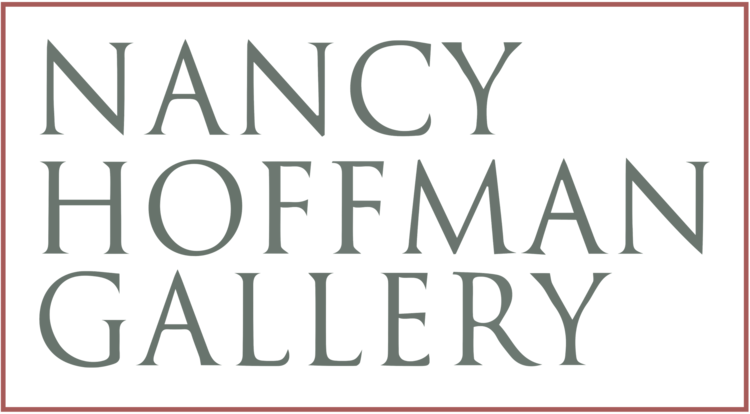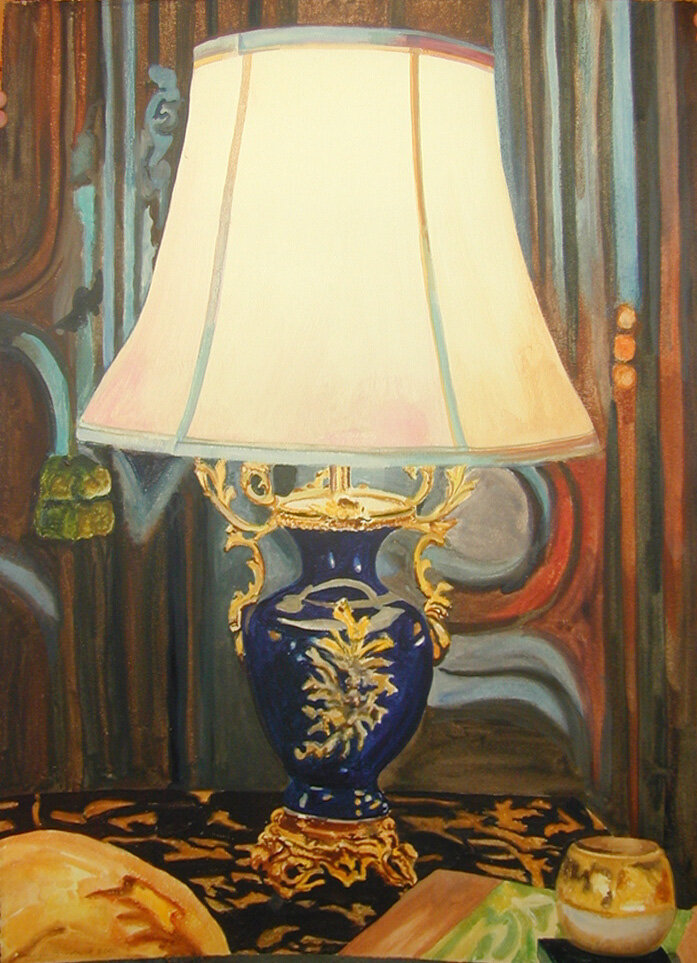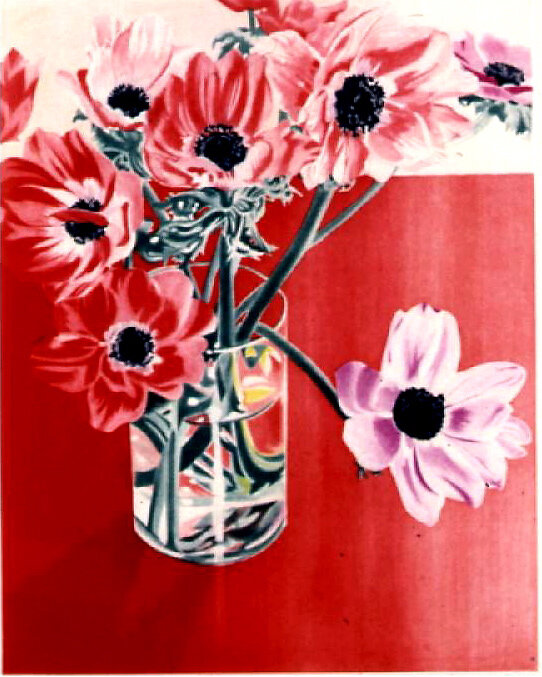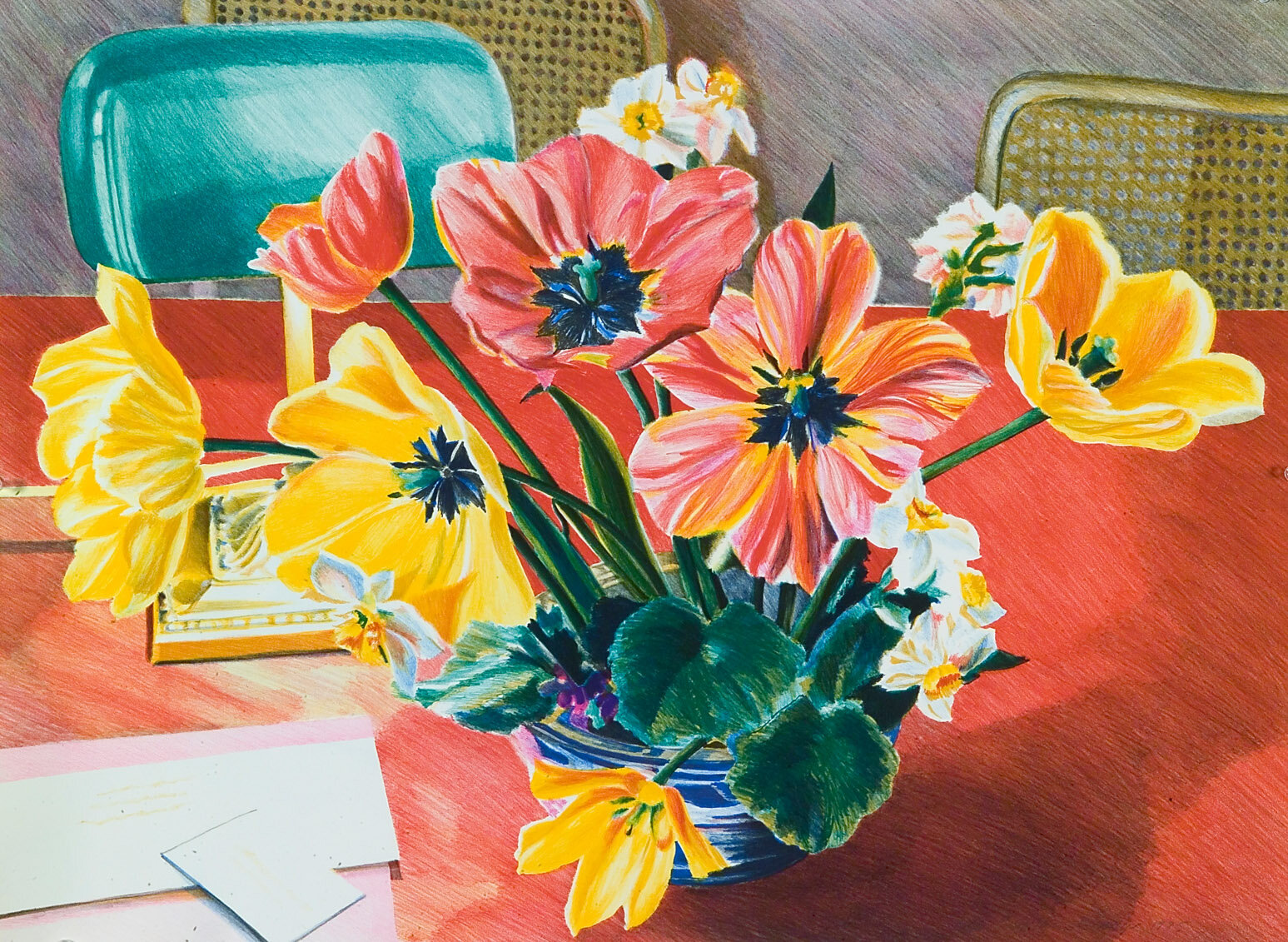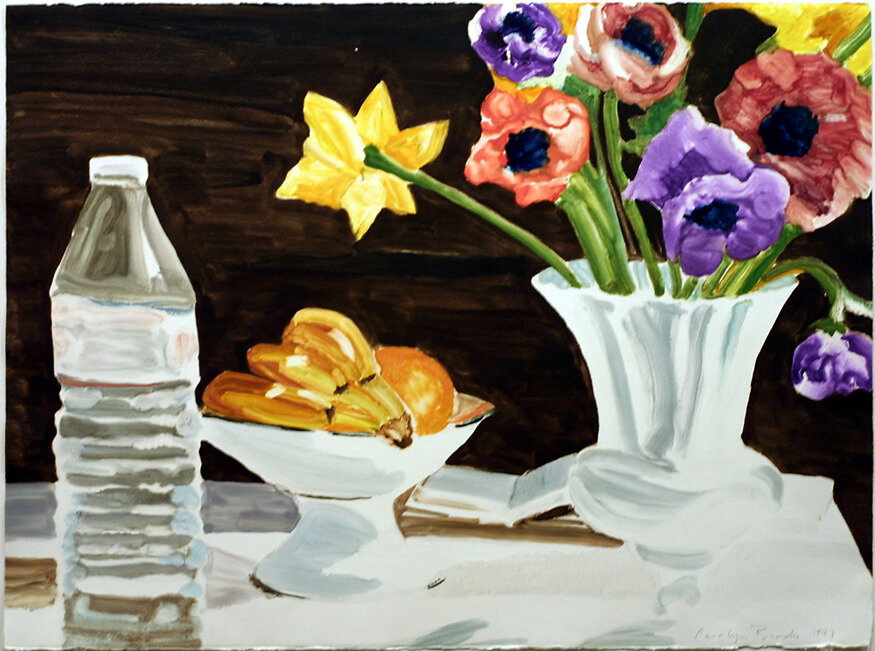CAROLYN BRADY
ABOUT THE ARTIST
Carolyn Brady was born in Chickasha, Oklahoma in 1937. She died in 2005. She received her B.F.A. and M.F.A. from the University of Oklahoma at Norman.
Carolyn Brady works exclusively in watercolor, exploring three main themes in her painting: still lifes or tablescapes; flower-filled gardens; interior still lifes combined with vistas from nature and the out-of-doors. While these themes recur in the artist’s work, it is the subject of light and the architecture of creating a painting that provide a framework for each of the artist’s images.
Brady’s paintings of the past several years have concentrated on the tablescape, the artist’s personal view of the table set at lunch or dinner, with the meal half-eaten; the table filled with a pitcher of flowers, the daily mail, a tin of cookies-the stuff of life, all lit by sunshine that enters the window behind the table; the table as a stage for life’s rituals. In her new tablescapes, Brady takes color to a new level, pushing its intensity, pulling its contrasts and enhancing our perception of reality by the heat of her palette.
Brady’s monotypes have a life of their own, more expressive and impressionistic than her carefully rendered watercolors, on which she worked for several months at a time. The media are different, each demanding in its own way; when Brady painted in watercolor she kept the brush dry so that the paint was immediately absorbed into the paper, using what she called “bits of paint” to create an image. The rigors of the monotype process required the artist to paint with ink on a metal plate, and complete the image within a day so that the plate could then be run through the press with the ink still wet. The “painting” the artist created on the plate was imbedded on the paper in reverse when being run through the press, thus the left side appeared on the right side of the finished monotype.
Brady was known for her garden and still life watercolors, which are close-in views of tabletops, tablescapes, incorporating the ordinary stuff of life: books, letters, postcards, hand bags, luncheon finery, plates, glasses, napkins, cutlery, and the leftovers of a meal. In “Purple Beans,” 1981, a plate of glistening purple beans from the artist’s garden, two cut-crystal vases of orange flowers, a bowl of ripe peaches and plums, a crystal cake plate holding a stack of mail—letters and cards—bedeck a table covered with a green tablecloth with white appliquéd flowers. The fruits tell us the season is summer, the joy of its produce manifest in the table’s offerings. Adding to the brilliant palette is the artist’s blue wall, the backdrop for this summer repast.
Exhibitions:
Flowering
Summer Gardens
Tiny Treasures
